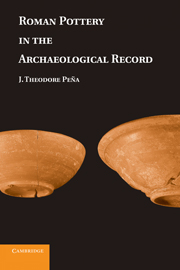Before advancing to a consideration of the eight behavioral practices incorporated into the model described in the preceding chapter it is necessary to consider three topics that represent essential background information: the forms of evidence available for the examination of these practices, the different functional categories of Roman pottery, and the economic value of Roman pottery.
Forms of Evidence
Four different forms of evidence provide information regarding the behavioral practices here under consideration: textual, representational, material cultural, and comparative.
Textual evidence
The textual evidence pertaining to the practices under consideration can be assigned to three distinct categories: documentary, epigraphic, and literary. Documentary evidence consists of texts that were produced for record keeping and similar purposes. In the case at hand, these comprise almost exclusively papyri from Roman Egypt, for the most part of imperial date and written in Greek. Epigraphic evidence, in turn, consists of texts inscribed in stone or some other durable material for purposes of public display. Literary evidence consists of texts composed for circulation to a broad readership.
Some of the literary texts that are of particular importance for this study warrant specific mention. De re coquinaria, a compilation of recipes probably drawn up during the fourth century and attributed to the first-century cook Apicius, provides a wealth of information regarding the ways in which pottery was used in connection with food preparation activities.
